- TOP
- Fish and Duckweed, after Yun Shouping; Calligraphy, after Dong Qichang
Overview
Fish and Duckweed, after Yun Shouping; Calligraphy, after Dong Qichang
- Museum No.
- AK889
Showing 1-6 of 18
| Title | Fish and Duckweed, after Yun Shouping; Calligraphy, after Dong Qichang |
|---|---|
| Designation | |
| Artist | |
| Category | Painting(A), Chinese Painting, Flowers and Birds Painting |
| Country | China |
| Period | Qing |
| Century | 19th |
| Year | |
| Quantity | |
| Materials | |
| Dimensions | |
| Inscription by | |
| Signature/Seals Etc | |
| Donor |
This object may be one within a set or the title of a set. To see all objects in the set, perform a Category Search by the Museum Number below, entering numerals only before the hyphen.

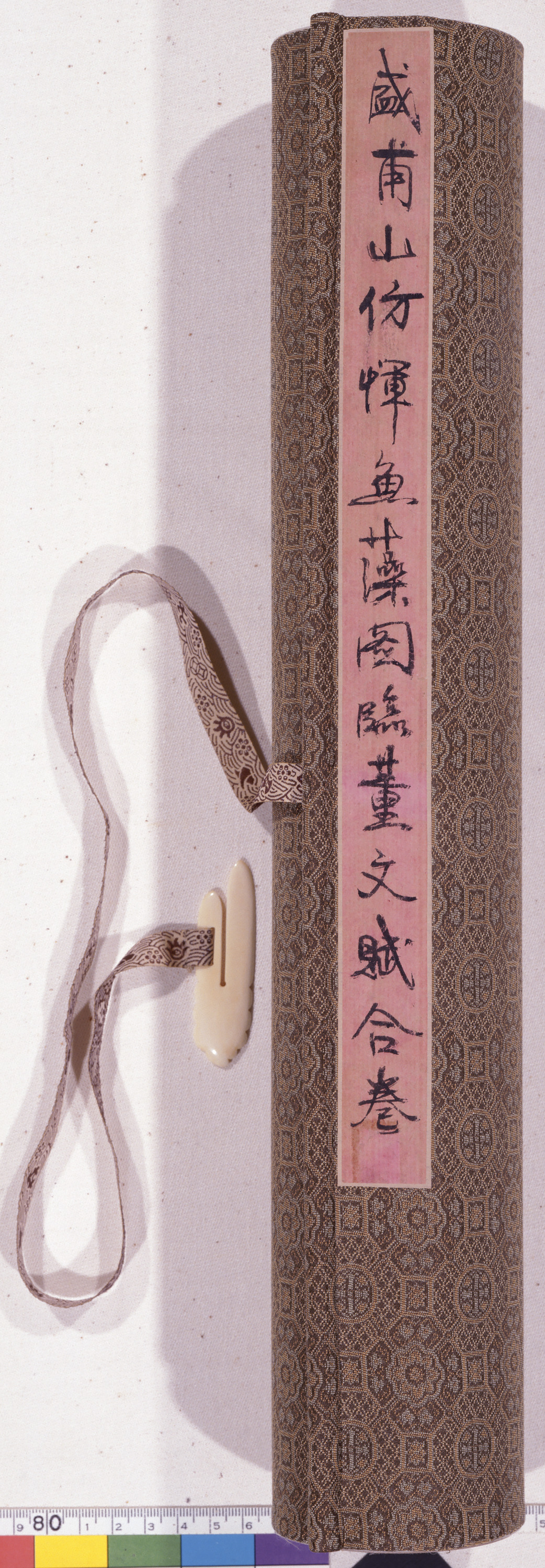




















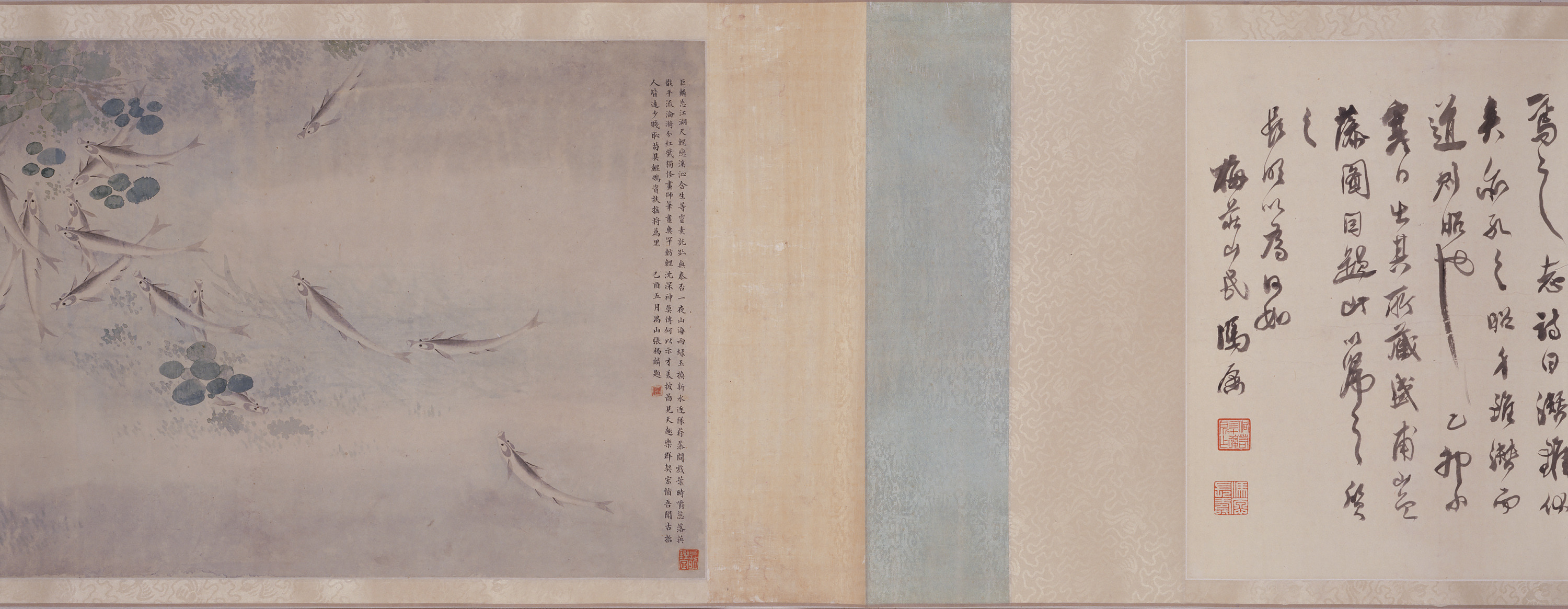
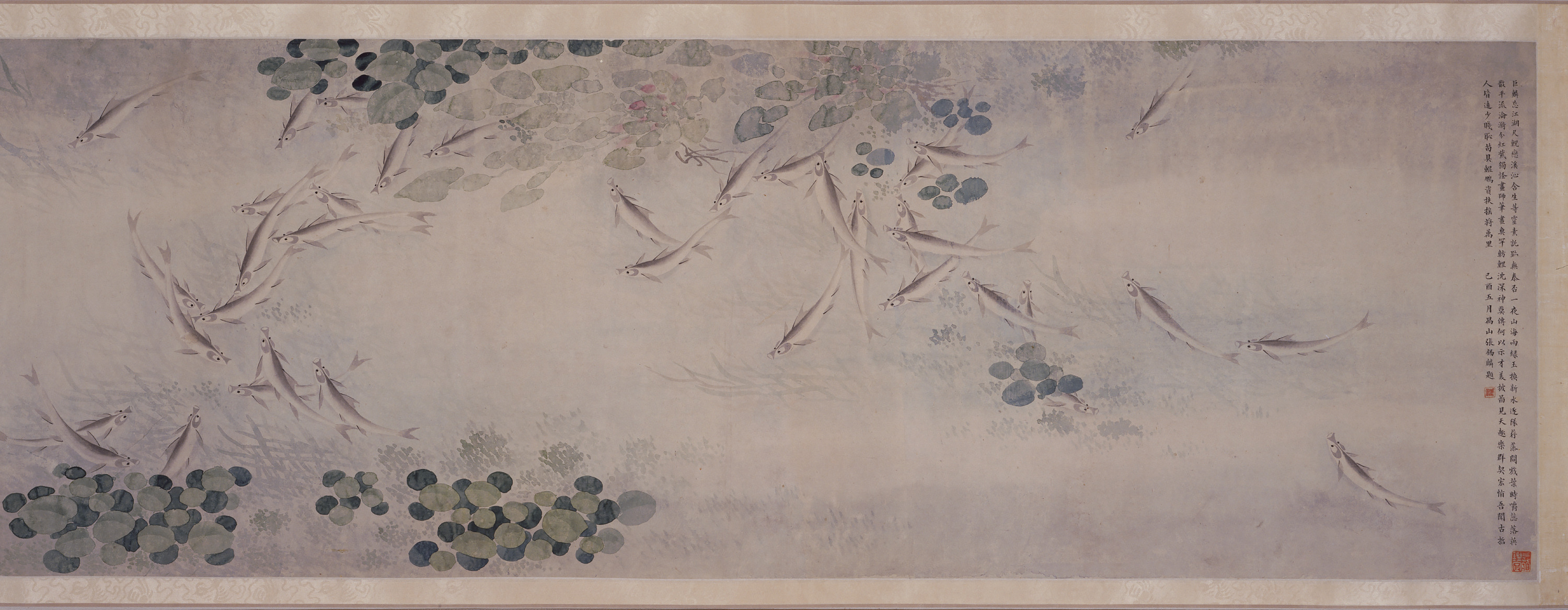
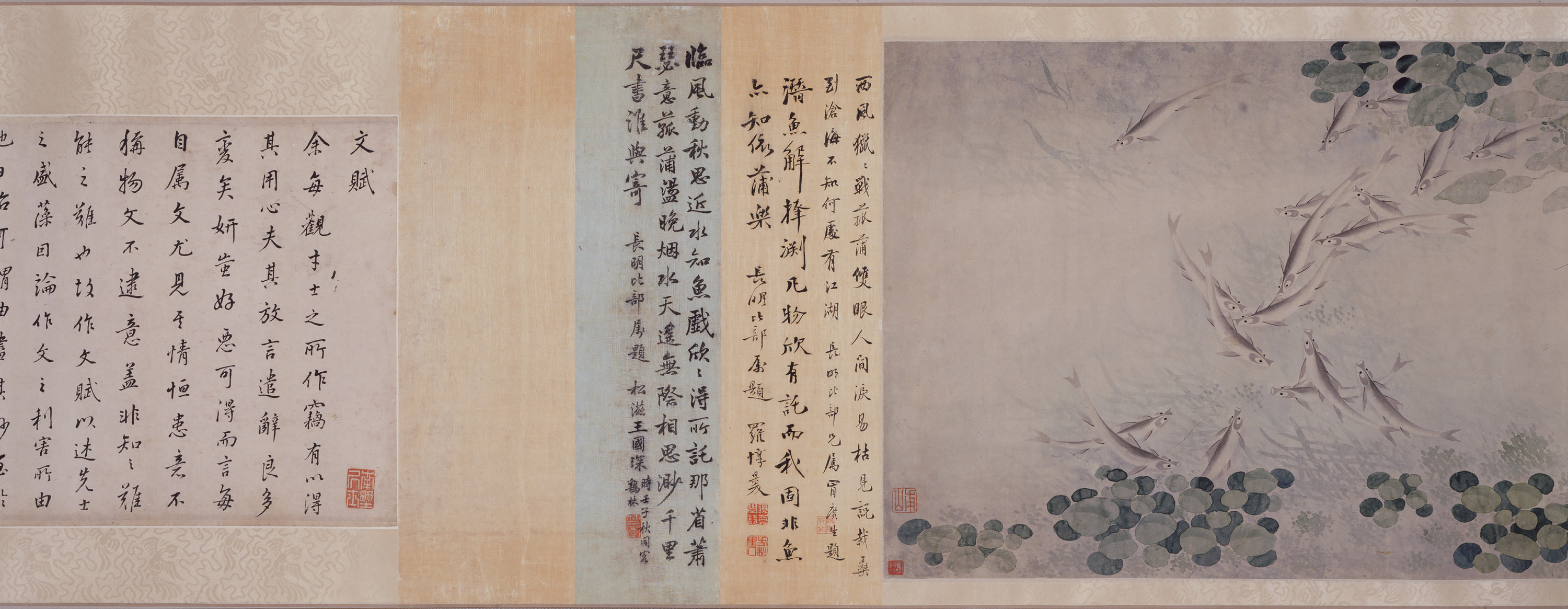
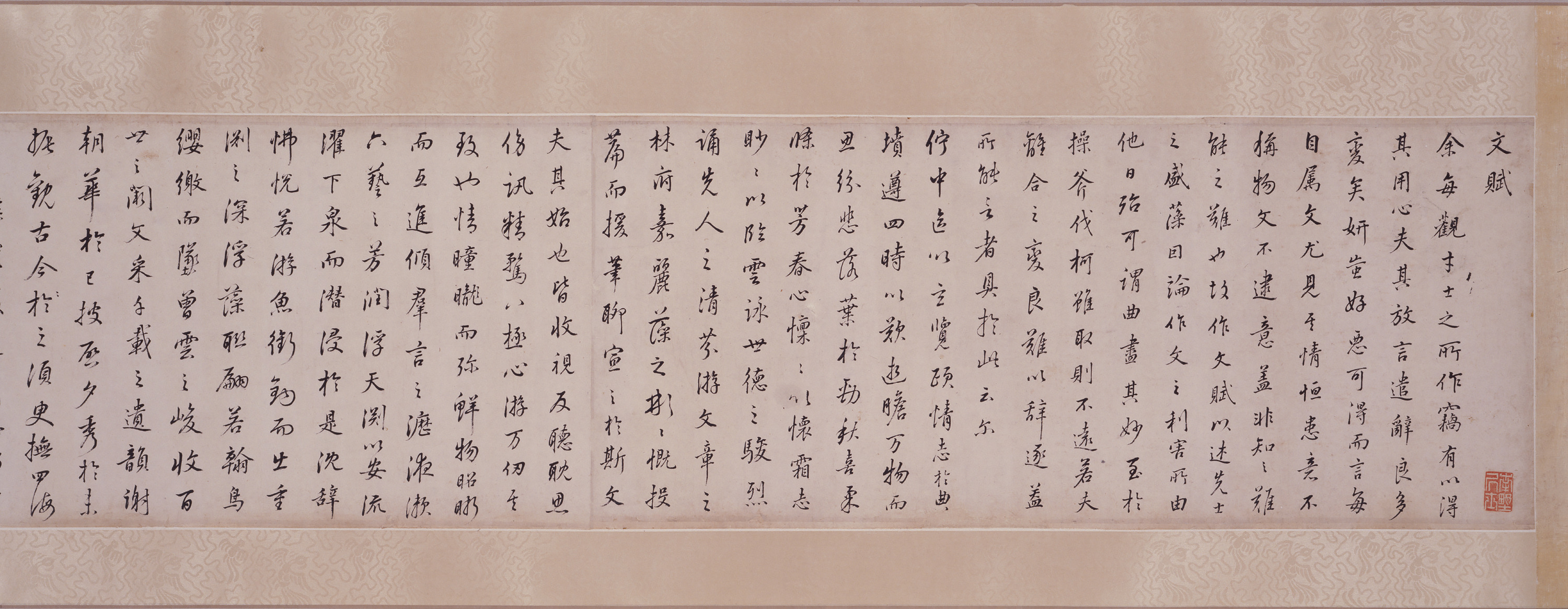
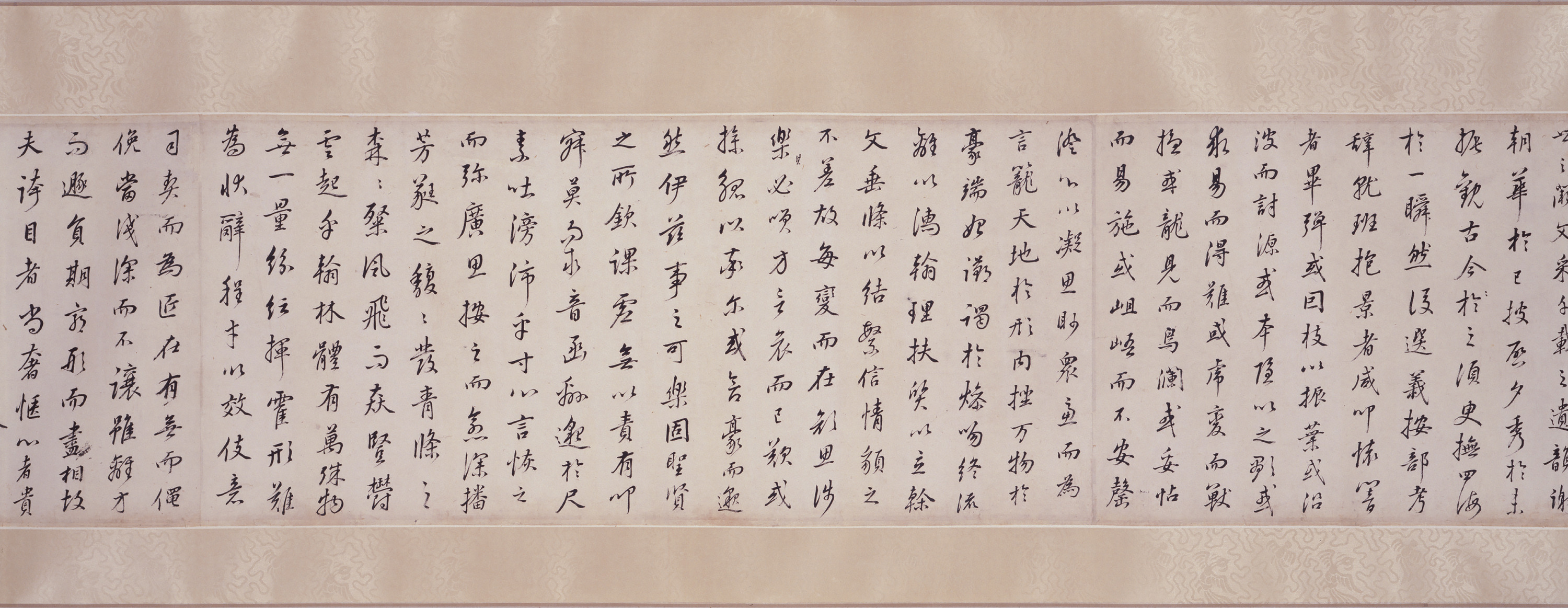

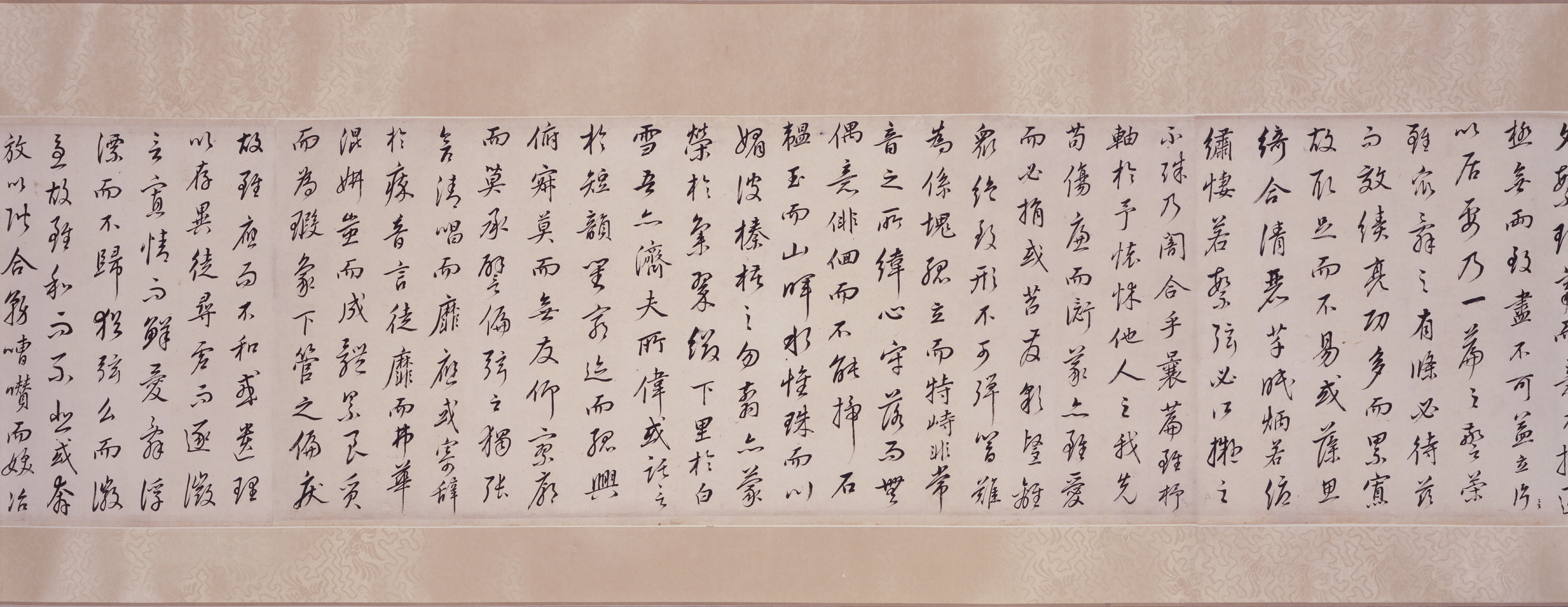
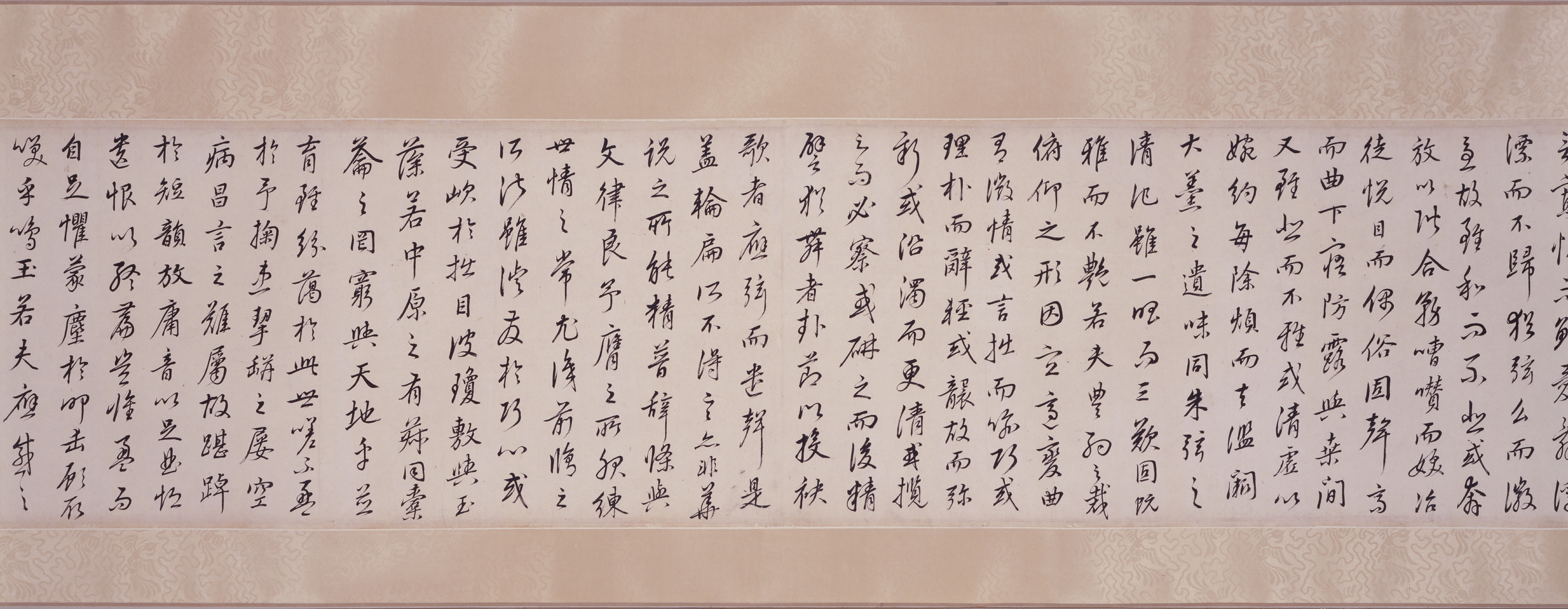
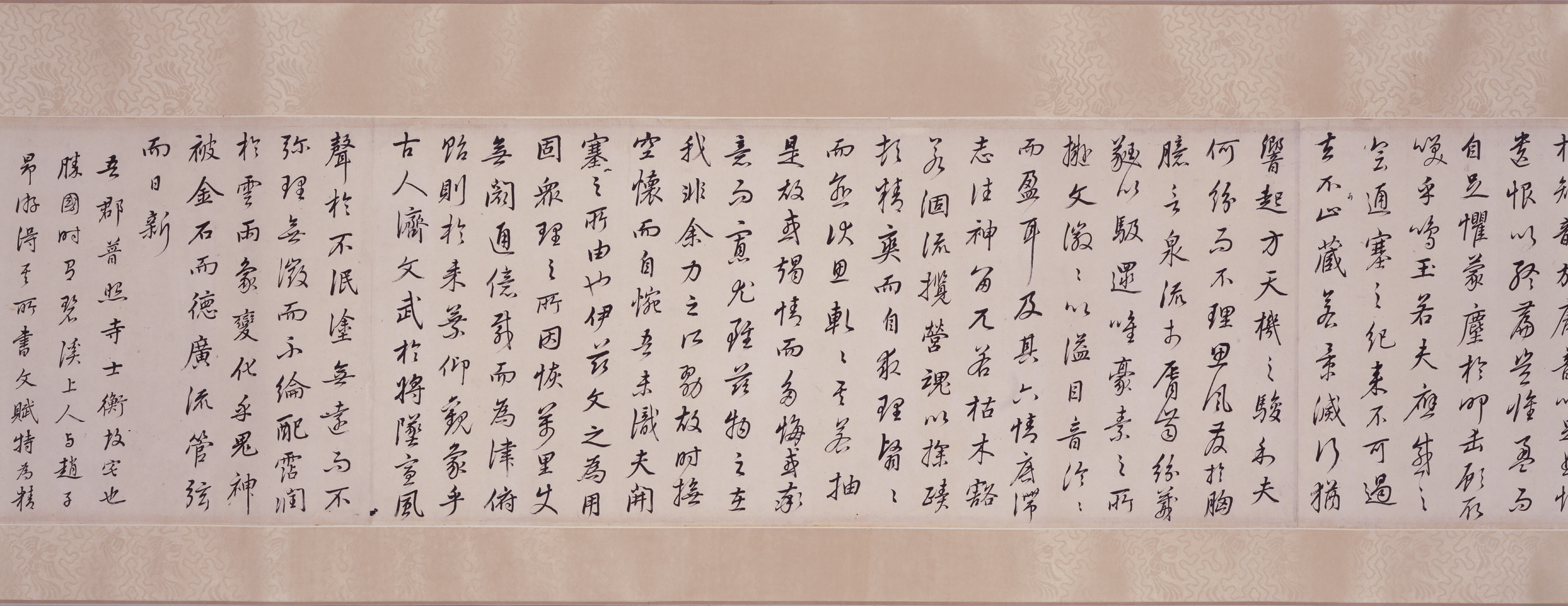
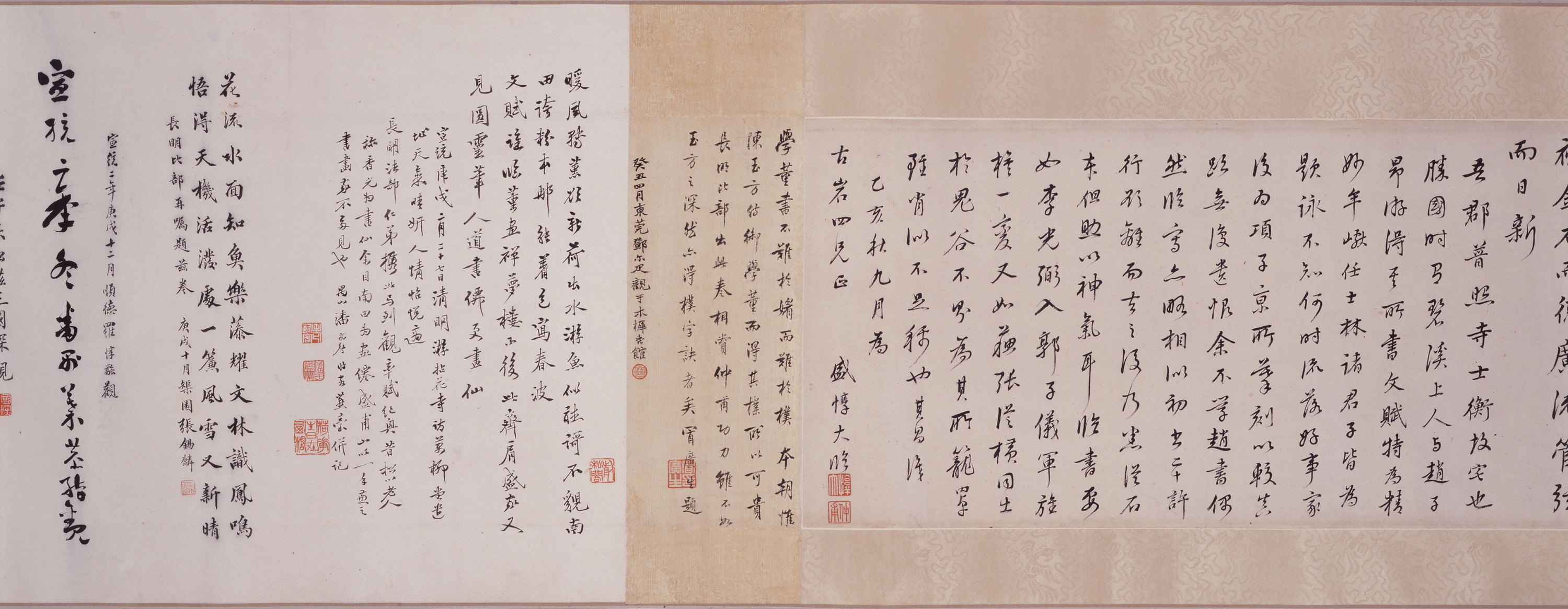
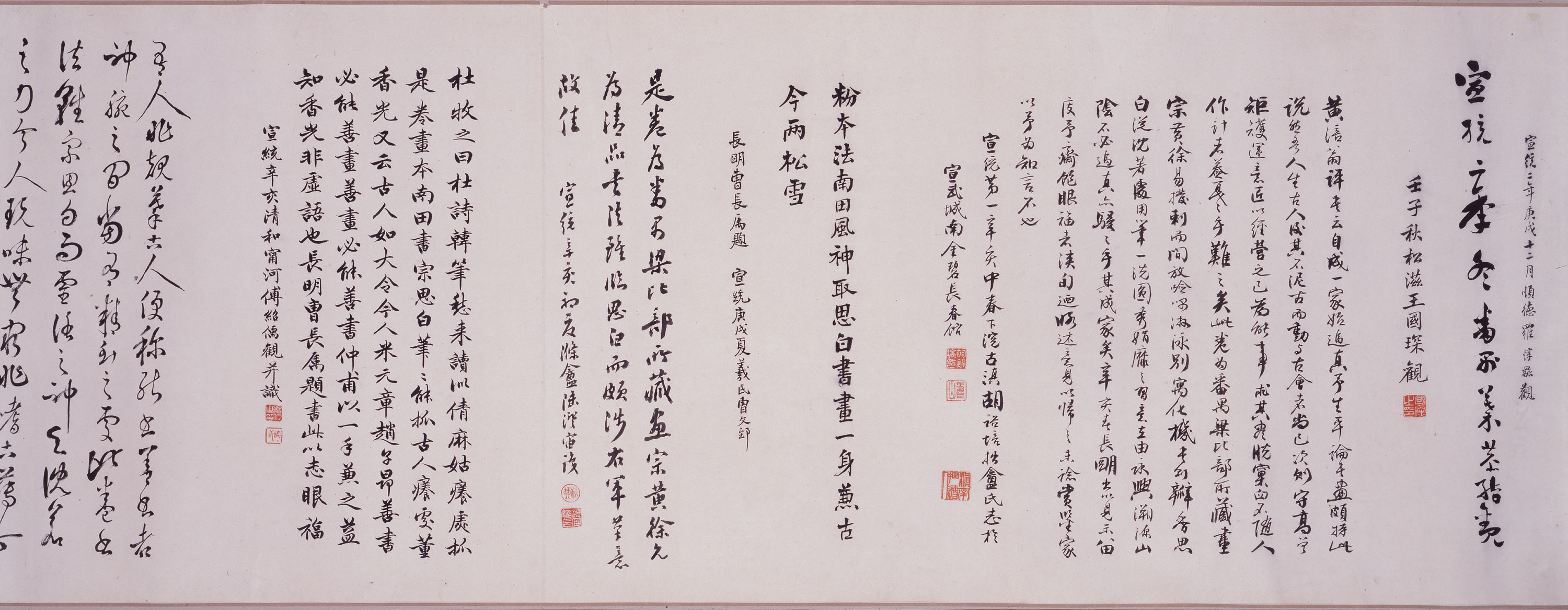

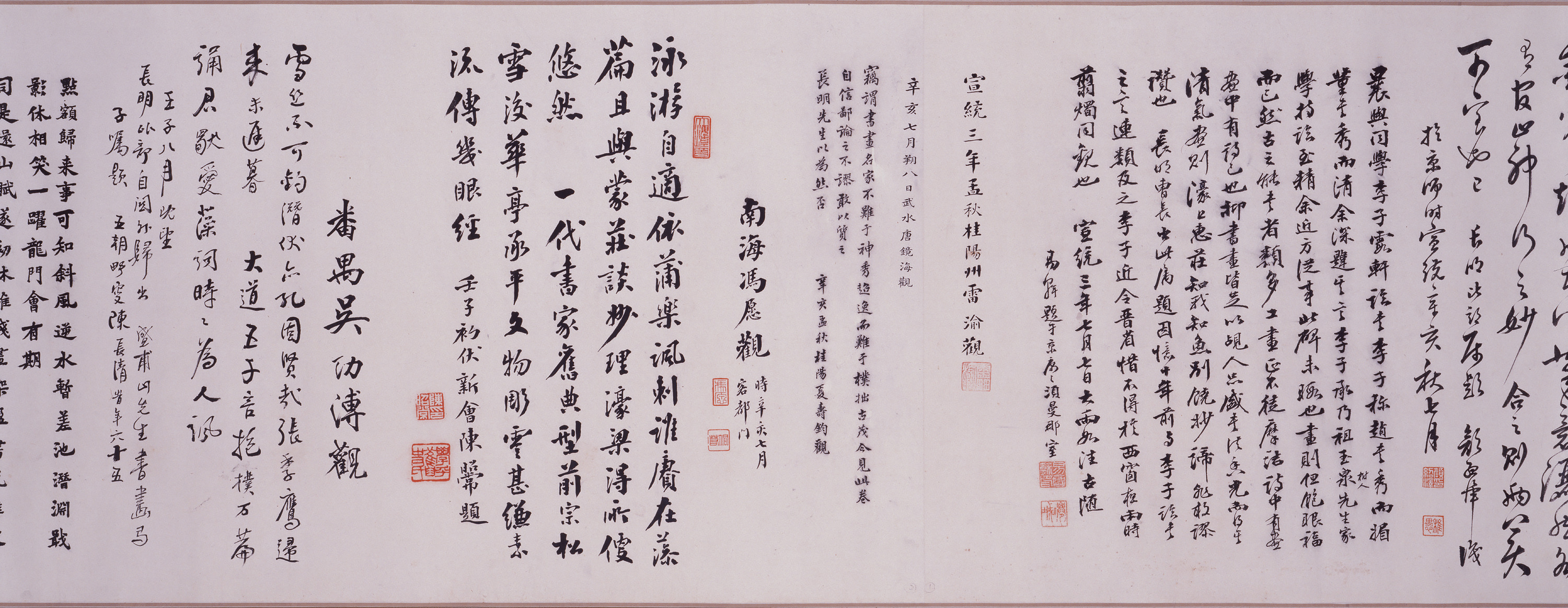
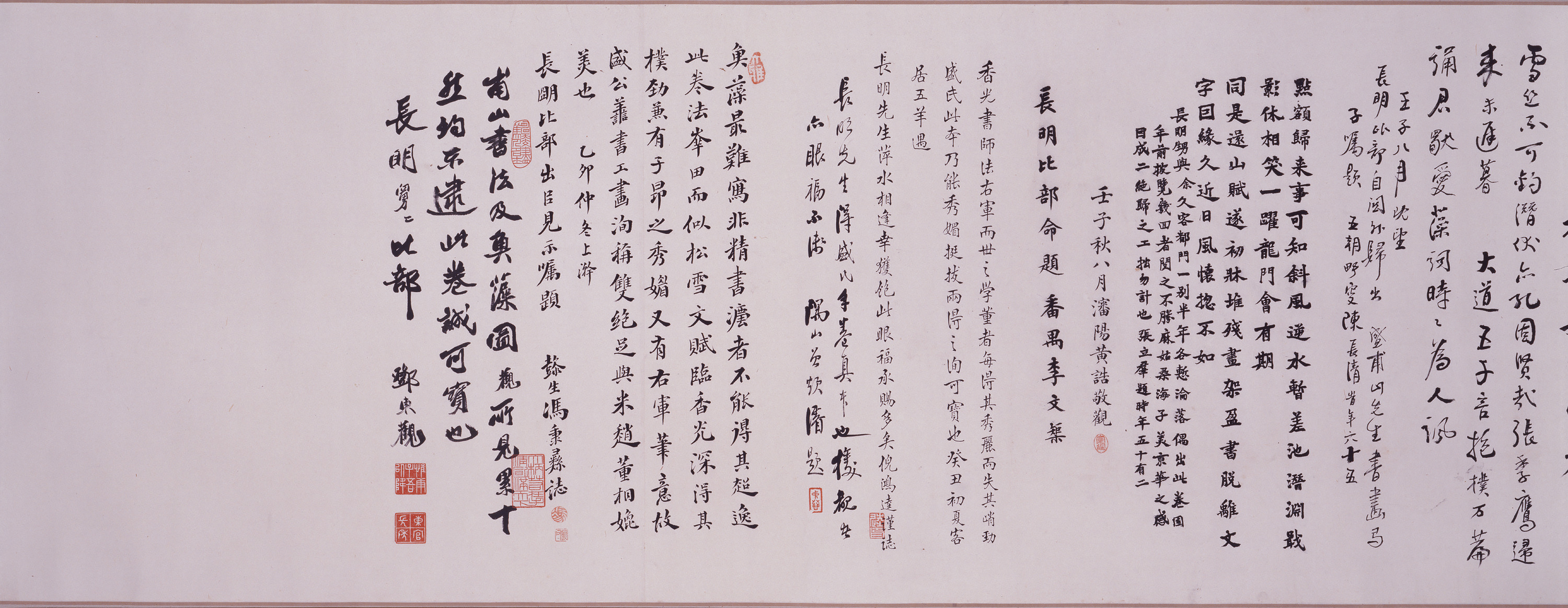
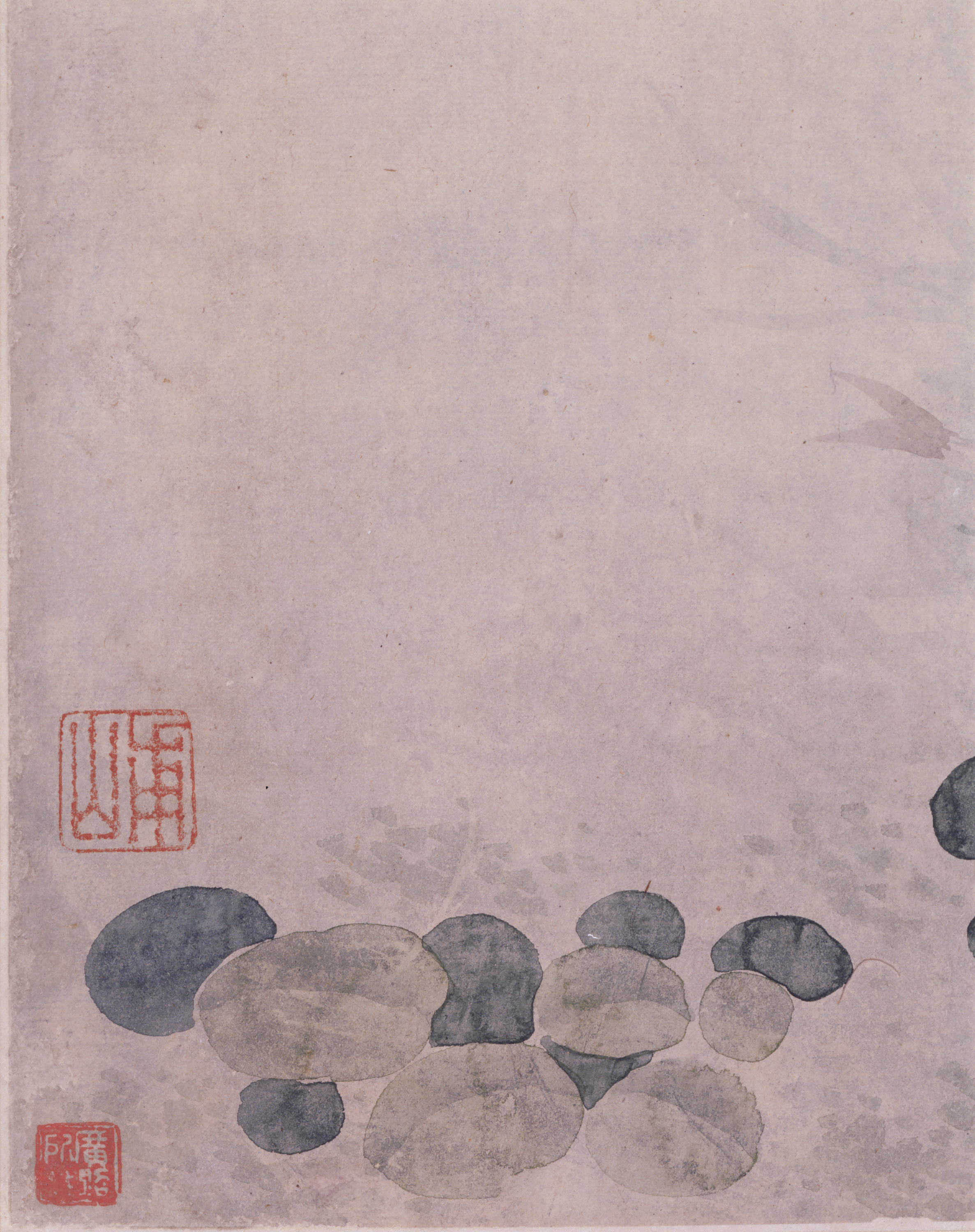




Sheng Dunda (1754-1825), also known as Fushan, used the penname, Nanshu. He was from Changzhou in the province of Jiangsu, China. He became a jinshi, or "successful candidate in the highest imperial examination," in 1781 (Jiaqing 2). He mastered calligraphy under the tutelage of Dong Qichang. His landscape paintings, styles of which resemble those of Wang Yuanqi (1642-1715), were praised at the time, and he was referred to as one of the "Two Shengs," together with Sheng Dashi.
This work includes a painting that follows the style of a fish and duckweed painting by Yun Shouping, who was from the same hometown as Sheng Dunda and who, together with Wang Yuanqi, was a celebrated artist of literati paintings of the early Qing dynasty (1644-1911). This work also includes calligraphy which was written from a copy by Dong Qichang of Lu Ji's Wen Fu, itself taken from a copy by Zhao Mengfu. The painting and the calligraphy were put together by a Cantonese collector, Liang Changming, in the final days of the Qing dynasty. The work bears postscripts by a dozen celebrities from the late Qing and the early days of the Republic of China (1911-1949).
The painter uses clear, light ink washes to depict a lively school of freshwater fish swimming in a river. The “boneless” brushwork imitates the style of Qing master Yun Shouping (1633–1690). The swimming fish call to mind anecdotes such as “The Joy of Fishes” from the Daoist book Zhuangzi, making it an evocative subject for viewers educated in Chinese classics.
China-Qing